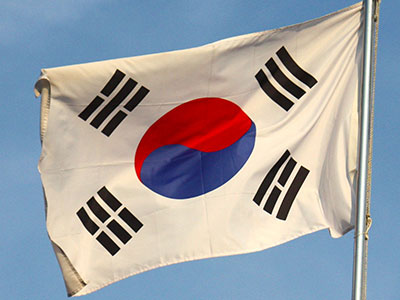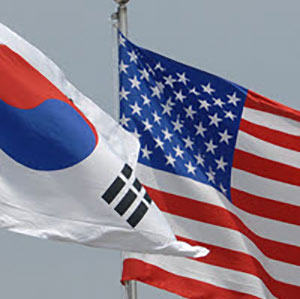The Outlook for South Korea in a Second Trump Administration
Gregg Brazinsky argues that Donald Trump’s return to the White House amplifies two trends in world politics that could seriously threaten South Korea’s prosperity and stability.
The second Trump administration ushers in a precarious time for the Republic of Korea (ROK). Donald Trump’s return to the White House amplifies two trends in world politics that could seriously threaten the ROK’s prosperity and stability. First, Trump’s re-election will accelerate the global retreat from the neoliberal economic order that has prevailed since the 1980s. Second, it heightens the divide between pro- and anti-American countries, likely forcing leaders—including those in Seoul—to choose sides.
Global Retreat from the Neoliberal Economic Order
The neoliberal economic order that much of the world has grown accustomed to since the 1980s has been rooted in free trade, globalization, deregulation, and consumer choice, among other principles. A product of market-oriented reforms that began during the 1970s, neoliberalism has produced winners and losers at both the national and subnational levels. South Korea was unquestionably one of the winners. Its economy grew at a breakneck pace during the 1970s and 1980s thanks to new trading opportunities and greater access to international markets. By the early 1990s, its leading multinational conglomerates such as Hyundai and Samsung were producing automobiles, semiconductors, and other high-tech products for the world. The ROK became an important player in global economic institutions such as the Organisation for Economic Co-operation and Development (OECD). And South Korea was also able to capitalize on China’s development and integration into the world economy.
Today, South Korea’s prosperity continues to depend on an international order that accommodates its export-dominated growth model. During the last few years, exports have constituted more than 40% of the country’s GDP, according to data from the World Bank—one of the highest proportions in the world. K-Pop and K-Culture, which occupy an increasingly significant part of the South Korean economy, also require continued enthusiasm for cultural globalization.
The second Trump administration seems likely to rain on this parade. Trump is bent on dismantling much of the economic order that propelled South Korea, Taiwan, and other export-oriented nations to prosperity. He has announced his intention to implement protectionist policies to curb the United States’ trade deficits, including higher tariffs on U.S. allies. The impact is already being felt in South Korea’s financial markets, where the Korea Composite Stock Price Index has declined and the won has fallen further against the dollar. Things could become much worse. One South Korean think tank has projected that Trump’s threatened tariffs would cause a $44.8 billion decline in the ROK’s exports and result in the country’s GDP contracting by 0.67% rather than continuing to grow. And this is only in the immediate future. The longer-term consequences of a global shift away from low trade barriers and easy access to markets are still uncertain.
South Korea might be able to mitigate the impact of some of Trump’s policies by courting other trade partners and increasing its manufacturing presence in the United States. But even if it manages to do so, it will face a difficult adjustment period that will test its policymakers and demand much flexibility and creativity on the part of its private sector.
Sino-U.S. Rivalry
The more confrontational approach that Trump promises to take toward the People’s Republic of China (PRC) and other U.S. adversaries such as Iran could create equally grave dangers for South Korea. The first Trump administration ended with Sino-U.S. relations at their lowest point since the Cold War because of mutual recriminations over the Covid-19 pandemic and U.S. sanctions against Huawei. The Biden administration re-established some stability in the troubled relationship, but sources of friction remained and the damage done during Trump’s first term could not be completely repaired.
Trump 2.0 will likely be a supercharged version of Trump 1.0 when it comes to China policy. While Trump’s rhetoric about Beijing has not been entirely consistent, he has thus far appointed a mostly hawkish group of cabinet secretaries and advisers to shape his China policy. Tariffs and a renewed trade war with China were always pretty much a given if Trump won the election, but the new team he has assembled is also likely to confront Beijing on human rights, Taiwan, and the South China Sea while ratcheting up competition in areas such as space and nuclear weapons.
Intensifying Sino-U.S. rivalry will put South Korea in an awkward and precarious position. The Trump administration will pressure Seoul to support its vision of a “free and open Indo-Pacific.” This might mean strengthening collective security arrangements with the United States and other allies, joining in U.S. calls for the PRC not to invade Taiwan, and participating in joint military exercises. Seoul’s problem is that satisfying Washington on many key issues will inevitably mean angering Beijing. The PRC has, in both subtle and not so subtle ways, cautioned South Korea against taking sides in its conflicts with the United States. Punishing countries that go against it on key issues either through economic boycotts or other forms of pressure has been a staple of Chinese foreign policy—as South Korea learned first-hand in 2017 after allowing the United States to deploy a Terminal High Altitude Area Defense (THAAD) battery.
Provoking bitterness from China could also be dangerous to South Korea because of Beijing’s singular capacity to influence North Korea. Twenty years ago, the PRC was far more willing to discourage North Korean provocations. But as Sino-U.S. frictions have risen, it has been less willing to play a productive role. South Korea needs the PRC to be a stabilizing force on the Korean Peninsula and not a passive observer to the North’s increasingly frequent saber-rattling.
Conclusion
The current leadership crisis in South Korea will only make these challenges more difficult to manage. The Constitutional Court needs to move quickly to resolve the crisis. Yoon Suk Yeol’s actions have likely made it impossible for him to lead the country in complicated times, and new elections would open the possibility for leaders with a stronger popular and democratic mandate to emerge. South Korea’s next president will need to carefully consider whether the greatest threat to national security comes from alienating Washington by not standing strongly enough with it against the PRC or from risking punishment from Beijing for taking the wrong stances on sensitive issues. The incoming ROK administration will need to be flexible and farsighted to successfully manage the security dilemmas posed by the mix of hyper-nationalism, protectionism, and bellicosity that the second Trump administration will likely bring.
Gregg Brazinsky is a Professor of History and International Affairs and Director of the Asian Studies Program in the Elliott School of International Affairs at the George Washington University.



